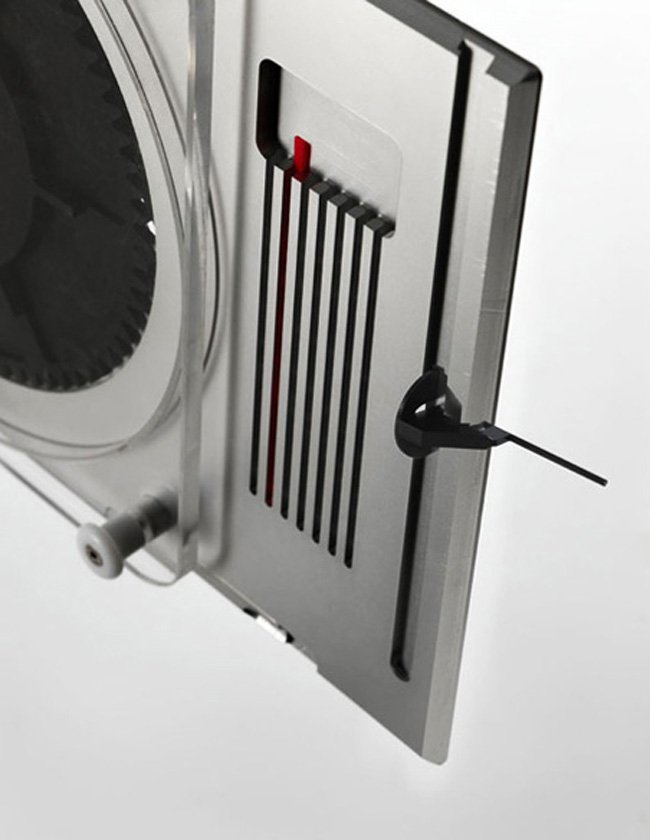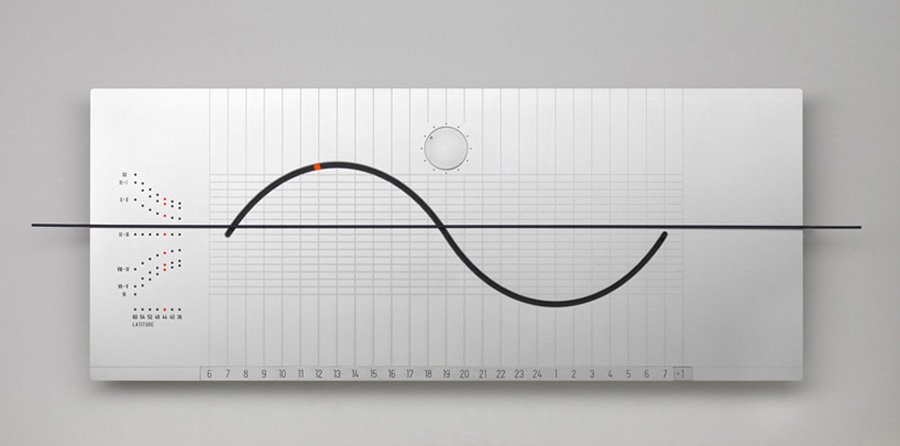
Sun Set by Italian designers Andrea Ponsi and Alessandro Belli is a wall clock that indicates, at any moment of the day, the exact time, the sun’s position in the sky at that precise instant, the times of sunrise and sunset, and the length of the day and the night. As opposed to traditional clocks whose information is based on a conventional image, Sun Set reflects a natural phenomenon of the cosmic order. By bringing the image of the sky into a room, Sun Set becomes a mediator between inside and outside, between the intimacy of personal space and the vastness of nature.
The upper one represents the daytime sky: smaller in the winter, because the sun’s course is briefer; wider and more expansive during the summer. The part below the horizon represents the night, the dark abyss of rest and mystery. After midnight, the line slowly rises toward the horizon, toward the light and dawn of a new day. It is like re-emerging after an immersion, returning to the surface of the light, the sounds and activities of everyday life. Time, marked by the alternation of day and night and the turn of the seasons, always returns and repeats itself in its cycles of birth, growth, decline and rebirth. Sun Set’s red dot, which indicates the sun and thus the time of day, also disappears at the end of the day and magically reappears to begin its course through a new day. The myth of the eternal return is repeated at every sunrise and every sunset. A Florentine object Every detail of the instrument is designed with care and engineering precision.
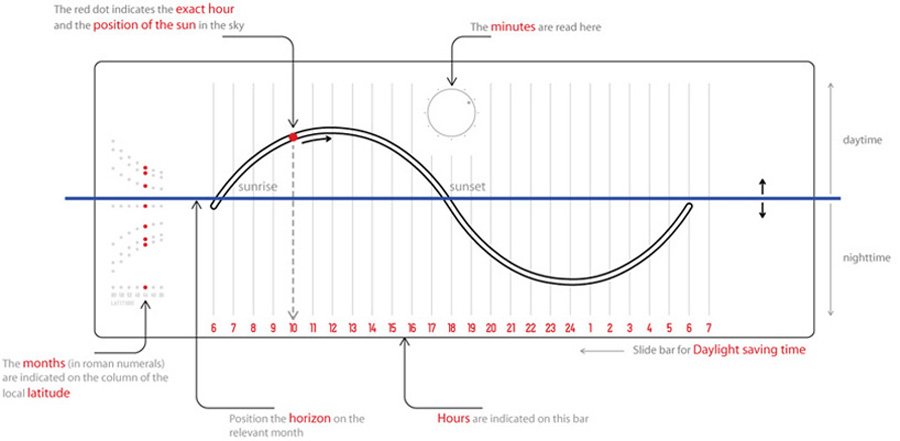
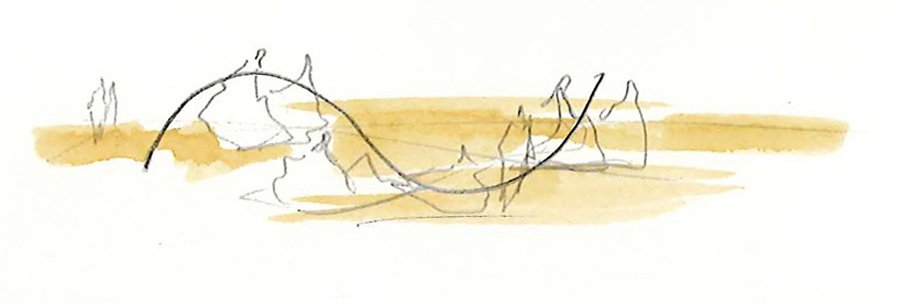
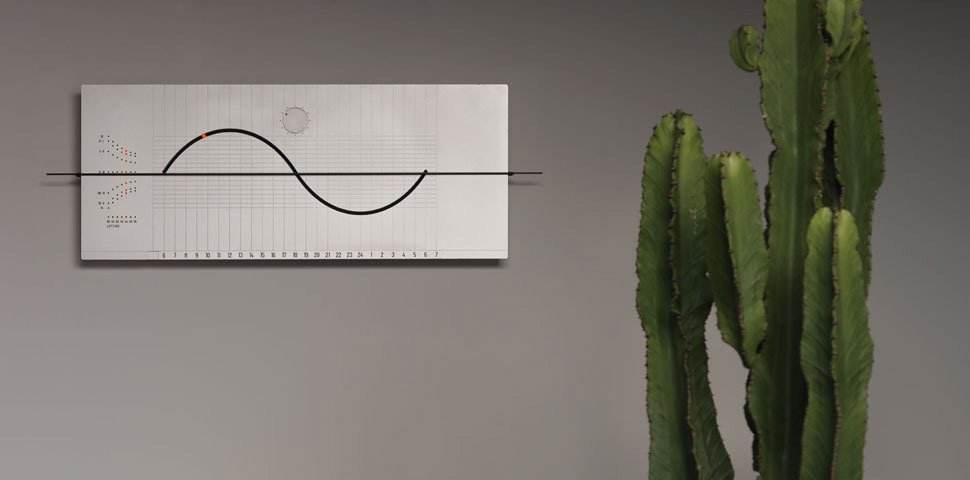
I have always had the feeling that the conventional way of measuring time using an hour-hand that makes a full sweep around itself twice a day was highly abstract and artificial. Why, I asked myself, not invent a clock capable of establishing a more realistic, and at the same time more emotional, relationship with the flow of natural cycles? A beautiful drawing by Le Corbusier shows a wavy line cut horizontally to divide day from night. Reflecting on that image, I thought that the sun’s course across the sky could itself be the ‚”hand” of time, marked off by the sun as it rises, climbs to its peak at noon, then sets below the horizon to continue its hidden course through the night. This sinusoidal line would not only indicate at every instant the exact time, the sun’s height in the sky, and the length of the day and the night, but express the idea of a movement forward, toward the future. A window onto the sky Sun Set is a window open onto the space outside, a view of the sky that is always up to date and observable in any place and at any hour of the day or night. Sun Set’s sine wave recalls the fluidity of a natural process, a slow change in the conditions of light and shadow. It expresses tranquility and at the same time dynamic tension. It is a wave of time, the fragment of a constantly renewing cycle. The horizon line cuts the sine wave into two sections.
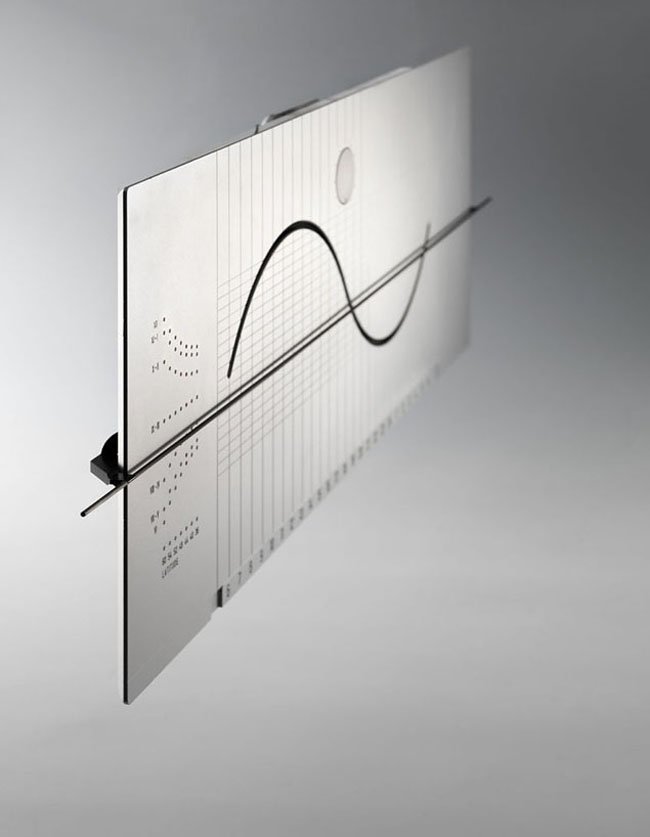
Even though the production takes advantage of advanced techniques of industrial modeling, all the parts that make up Sun Set are built and assembled with meticulous artisan skill in one workshop in Florence. Ever since the Renaissance, the humanist ideal of the union between science and art has resulted in the development in Florence of important scientific academies, astronomy observatories, and optical and electro-mechanical manufacturers. Sun Set is thus, like its creators and the place where it is made, a Florentine object, above all because of the inventiveness which has so strongly characterized the identity of this city over the centuries.
